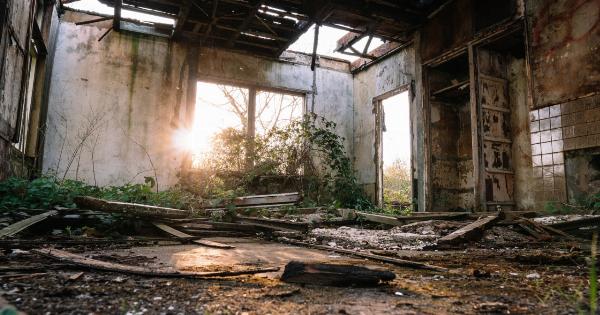Bile is a vital component of our digestive system that helps in the breakdown and absorption of fats. Produced in the liver and stored in the gallbladder, bile aids in the digestion and absorption of dietary fats.
While bile plays a crucial role in our health, problems with its production, secretion, or flow can lead to various symptoms and complications. In this article, we will explore some common bile problems and their associated symptoms.
Gallstones
Gallstones are one of the most prevalent bile-related problems and can cause significant discomfort. These hardened deposits form in the gallbladder and can range in size from tiny grains to larger masses.
Gallstones can obstruct the bile ducts, impeding the normal flow of bile and causing symptoms such as:.
- Abdominal pain, often on the right upper side
- Back pain between the shoulder blades
- Nausea and vomiting
- Indigestion and bloating
- Jaundice (yellowing of the skin and eyes)
If you experience these symptoms, it is essential to consult a healthcare professional for diagnosis and treatment options.
Biliary Dyskinesia
Biliary dyskinesia refers to a condition where the gallbladder fails to contract properly during digestion. This can result in a reduced ability to release bile into the intestines. Common symptoms of biliary dyskinesia include:.
- Chronic abdominal pain, particularly after meals
- Nausea and vomiting
- Feeling of fullness or bloating
- Heartburn or acid reflux
Doctors may diagnose biliary dyskinesia through various tests, including a gallbladder emptying scan, and treatment may involve surgical removal of the gallbladder.
Bile Reflux
Bile reflux occurs when bile flows back into the stomach and esophagus, causing irritation and inflammation. This condition can develop alongside gastroesophageal reflux disease (GERD) or independently. Symptoms of bile reflux may include:.
- Heartburn, often worse after meals or when lying down
- Abdominal pain or discomfort
- Nausea
- Vomiting bile
- Cough or hoarseness
Treatment for bile reflux often involves lifestyle modifications, such as dietary changes and medication to reduce stomach acid production. In severe cases, surgery may be required to correct the issue.
Cholangitis
Cholangitis is a bacterial infection that affects the bile ducts, causing inflammation and blockage. It is often associated with the presence of gallstones or other obstructions. Symptoms of cholangitis can include:.
- Severe pain in the upper right side of the abdomen
- Fever and chills
- Jaundice
- Dark urine and pale stools
- Generalized weakness and fatigue
Cholangitis is considered a medical emergency, and immediate treatment with antibiotics and interventions to remove obstructions is necessary to prevent severe complications.
Biliary Stricture
A biliary stricture refers to a narrowing of the bile ducts, often caused by scarring or inflammation. This can obstruct the flow of bile and lead to complications. Symptoms of biliary strictures may include:.
- Jaundice
- Abdominal pain and discomfort
- Nausea and vomiting
- Unintentional weight loss
Depending on the severity and location of the stricture, treatment options can include endoscopic interventions or surgery to widen the narrowed duct.
Bile Duct Stones
Similar to gallstones, bile duct stones are hardened deposits that form in the bile ducts. These stones can cause blockages and lead to various symptoms such as:.
- Severe abdominal pain
- Yellowing of the skin and eyes (jaundice)
- Fever and chills
- Nausea and vomiting
Treatment for bile duct stones typically involves procedures to remove the stones, such as endoscopic retrograde cholangiopancreatography (ERCP) or surgical intervention.
Biliary Atresia
Biliary atresia is a rare disease that affects infants, causing the bile ducts to be either absent or abnormally narrow. This condition leads to bile flow obstruction and jaundice. Additional symptoms of biliary atresia can include:.
- Pale stools and dark urine
- Frequent itching
- Growth failure
- Enlarged liver and spleen
Treatment for biliary atresia often involves surgical intervention to bypass or reconstruct the bile ducts. Early detection and prompt management are crucial for better outcomes.
Primary Biliary Cholangitis
Primary biliary cholangitis, previously known as primary biliary cirrhosis, is a chronic autoimmune disease that targets the small bile ducts within the liver. This leads to their destruction and subsequent bile flow impairment.
Symptoms of primary biliary cholangitis may include:.
- Fatigue and generalized weakness
- Itching (pruritus)
- Abdominal pain or discomfort
- Dry eyes and mouth
- Yellowing of the skin and eyes (jaundice)
Treatment for primary biliary cholangitis aims to manage symptoms, slow disease progression, and prevent complications. Medications and lifestyle modifications are often prescribed. In some cases, liver transplantation may be necessary.
Choledocholithiasis
Choledocholithiasis refers to the presence of gallstones in the common bile duct, causing blockages and disturbances in bile flow. Symptoms of choledocholithiasis can include:.
- Abdominal pain, often severe
- Jaundice
- Nausea and vomiting
- Fever and chills
Diagnosis of choledocholithiasis usually involves imaging tests, and treatment may involve endoscopic procedures or surgery to remove the stones and restore normal bile flow.






























